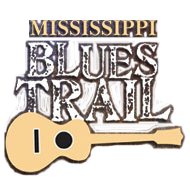61 Highway
61 Highway - Vicksburg
Highway 61 occupies an important place in the blues, serving both as a popular lyrical symbol for travel and the actual route by which many artists moved northward. The original route of U. S. Highway 61 that was mapped out in the 1920s ran from downtown New Orleans to Grand Portage, Minnesota, on the Canadian border and connected cities including Memphis, St. Louis, and St. Paul. Within Mississippi the highway was initially mostly gravel and ran approximately four hundred miles through the downtown areas of many communities. Today’s route, which largely bypasses city centers, is considerably straighter and about eighty miles shorter.
The blues likely emerged in the late 1890s and the early 1900s, around the same time as the introduction of the automobile. Cars were initially somewhat of a novelty and luxury product – there were reportedly only twenty in Mississippi in 1900 – but this situation changed dramatically following the Ford Motor Company’s introduction of the Model T in 1908 and the moving assembly line in 1913; by 1920 there were eight million registered cars on the road. This growth was accompanied by widespread demands by commercial interests and citizens’ groups to build roads for the promotion of economic development, national defense, and tourism.
In 1916, when World War I raised concerns about interstate transportation of goods, the federal government initiated aid to states for road building, and the Federal Highway Act of 1921 mandated a national highway system. U.S. Highway 61 was one of nine numbered highways that ran through Mississippi that were officially designated in November of 1926, and construction on the initial road continued until the early ‘40s. By this time at least seven blues singers had recorded songs about Highway 61; later artists who cut songs on the theme included Vicksburg’s Johnny Young and Bob Dylan, who recorded the influential 1965 album “Highway 61 Revisited.”
Among the African American singers and musicians who have lived in communities along the southern stretch of Highway 61 in Mississippi are Willie Dixon, Louisiana Red, Artie “Blues Boy” White, Percy Strother, Greg Osgood & Cee Blaque, Little Joe Blue, Milt Hinton, and the Red Tops from Vicksburg; Muddy Waters and Johnny Dyer from Rolling Fork; J. D. Short from Port Gibson; Hezekiah & the Houserockers, Papa Lightfoot, William “Cat Iron” Carradine, Jimmy Anderson, Elmo Williams, and the Ealey brothers from Natchez; and Scott Dunbar, Polka Dot Slim, Robert Cage, Lester Young, and William Grant Still from Woodville.
{tag_captions}
content © Mississippi Blues Commission
[ BACK TO TOP ]

